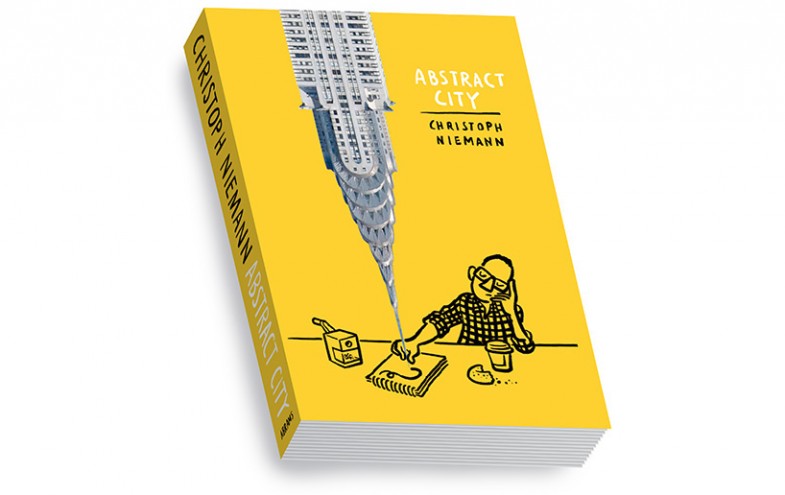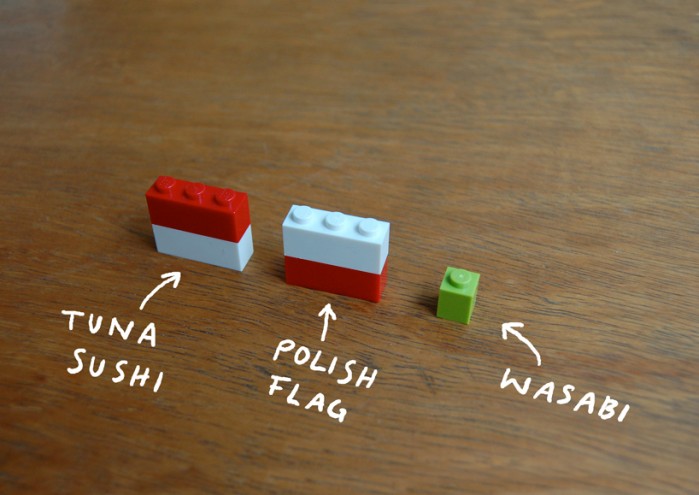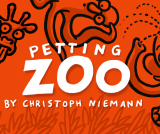Part of the Project
Christoph Niemann's work has appeared on the covers the New Yorker, Time, Wired, and The New York Times Magazine. Since 2008, he has been writing and illustrating the whimsical blog Abstract Sunday where he covers everything from politics, the global economy, art and modern life.
Niemann was a speaker at the 2013 Design Indaba Conference where he launched the Petting Zoo app -- composed of a menagerie of 21 illustrated, animated animals, the user simply wiping and tapping each creature to see how they react. The app combines Niemann's charming hand-drawn animations and humour, with technology. The interactive picture book which Design Indaba commissioned and produced.
Designboom spoke with the New York-based designer about his practice and what drives him to create the work he does.
DB: Please could you tell us briefly about your background and how you ended up working in New York?
CN: I had studied graphic design in Stuttgart Germany. It was an excellent school, but eventually I decided that I needed some international experience, so I applied for some internships in New York. One year I worked with Paul Davis and the next year with Paula Scher at Pentagram.
DB: Which have been your most significant and satisfying projects to date?
CN: That is very hard to answer. I have to admit though, that working on covers for of the New Yorker is a very unique challenge. It had been the ultimate goal for me ever since I was a student, and it is still one of the greatest treats if it works out. Based on the feedback I received, the drawing I did during the time of the Fukushima disaster was the most successful I guess. The column I have been writing for the Times has been the most satisfying project.
It is a scary stage to be given, but it has been very fulfilling to see the diverse projects (from the Lego series, to the dough to the live drawing of the marathon) eventually growing into a continuous body of work.
DB: What is the attraction of abstraction for you?
CN: Abstraction in itself is not very interesting. The kind of art that got me interested in drawing (Uderzo, Don Martin, Mort Drucker) certainly was not very abstract. Eventually I realised though that I enjoy art the most, if a very simple message sets off a big reaction with the reader. One of the best examples of what I love about abstraction is that classic scene in Jurassic Park: two scientists sit in a car, it's pitch black outside, and all of the sudden they see tiny ripples in a glass of water on the dashboard, and you know that they are the vibrations of a T-Rex slowly stomping around out there. The idea of conveying something huge and terrifying by showing something as small and benign as a glass of water I find so much more intriguing artistically than the fanciest rendering of the actual dinosaurs.
DB: You appear to be able to translate your ideas immediately into a drawing as demonstrated in your "live coverage" pieces - do you always conceive and render your ideas so quickly?
CN: In the years that I worked a lot on daily newspaper pieces (especially for the NY times op-ed page) I learned to handle very tight deadlines, and this is what I try to take advantage of in the live coverage pieces. In general though, my process is quite the opposite: there are tons of sketches, abandoned ideas, dead ends pursued. When I work on something with a very complex story line (like this) or on something as technically and artistically complex as the app, the only path to success leads through mountains of killed ideas. And the hardest part is of course is to make a difficult idea look like you just came up with it in the shower and put it on paper in less than three minutes. When I work for my Abstract Sunday column the drawing and the writing always happens at once.
DB: You use many different mediums to produce your work - do you have a personal preference?
CN: When all is set and done, nothing beats the sexiness of black ink on a crisp white drawing pad.
DB: What are the key differences between art and illustration for you?
CN: Most importantly: I don't see any quality hierarchy between the two (as in "art is the uncompromising, more intelligent cousin of illustration"). Maybe good art leaves you with more questions than answers, whereas with good illustration it's the other way around?
DB: Who are some of the people or references who have influenced you the most?
CN: Gustave Doré, Saul Steinberg, Don Martin, James Turrell, Gerhard Richter, Flan O'Brien, Monty Python.
DB: How do you think the popularity of online resources influences illustration and design being produced today?
CN: There is definitely a ton of pretty bland, stock photo-driven stuff out there. But there are two things that make me hopeful for our profession: one, with a bit of luck, you can cheat because your chances of finding a decent image on the web are pretty good. But as soon as you need a second image, because you want to tell a story of some sort, it gets really tricky. That’s when you have to generate your own thing and can't rely on what is already out there. And most importantly: I feel that because of the internet, the visual literacy of the readers out there has gone through the roof in the last couple of years. The visual wit and humour of a lot of the hand-curated Tumblr sites out there is mind boggling, and there is nothing more important for a creator of visuals than having a savvy audience.
DB: Besides your professional work - what do you have a passion for and why?
CN: One day, I want to be able to play a Schubert impromptu on the piano. By all accounts that day is far, far away, but I am not giving up yet.
DB: What is the best piece of advice you have ever been given?
CN: Heinz Edelmann, my design professor at the Stuttgart Academy, told us: "you will be surprised at how many problems can be solved by hard work".
DB: What is the worst piece of advice you have ever been given?
CN: Relax!























